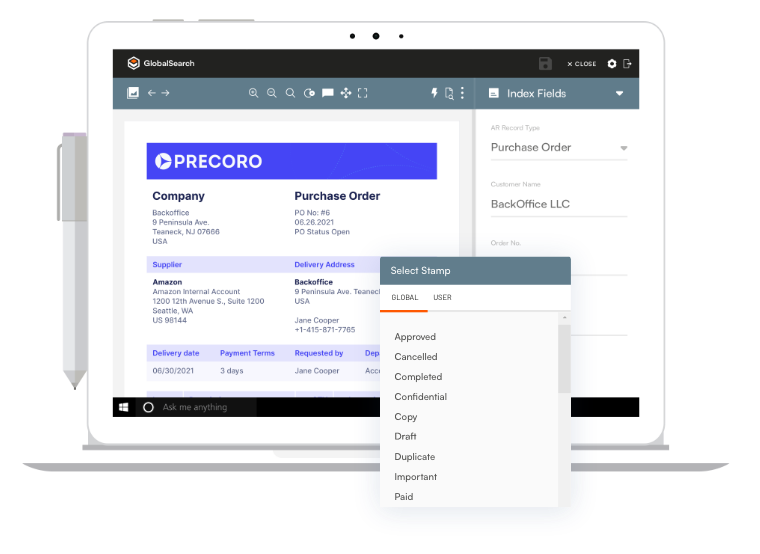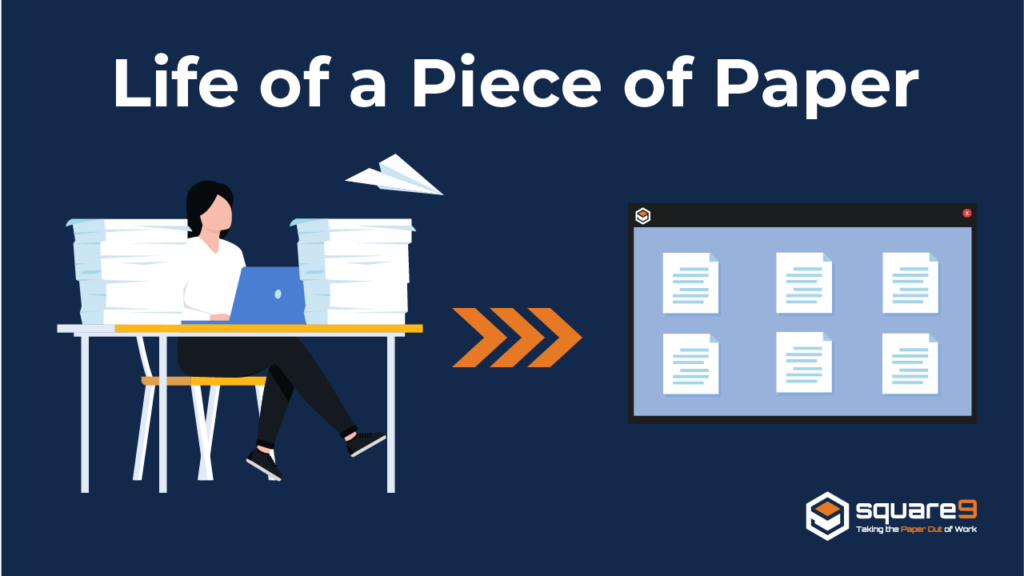- Contact Us for a brief discovery session to discern your unique set of needs.
- You will be presented with a range of options to meet the challenges you face, in the way that suits your business best.
- Together, we’ll plan out the details of your new solution for a satisfaction guarantee.
Taking the Paper Out of Work
How Square 9 Works
The Square 9 AI-powered Intelligent Information Management Platform takes the paper out of work and makes it easier to get things done with digital workflows that automate many aspects of how you work today.
Offering more than AP invoice automation, we make it easy to extract information from scans or PDFs, store documents in a searchable archive, and build digital twins of your current processes through graphical workflows. Discover how to maximize your investment with an AI-driven intelligent information management platform.
The Square 9 Difference
Square 9 is a trusted name for getting the results you’re after. With an industry-leading return on investment achievable in just a year and a half, Square 9 customers benefit from better information management across their organizations.
A successful transition to automation requires resources and experience. Square 9 provides these to customers in spades with highly knowledgeable support and professional service teams, complimentary product education, and countless technical resources to take on challenges yourself.
Growing businesses flourish using Square 9. With easily adjustable server resources to help customers meet demand and the capacity to expand into countless departments, Square 9 customers benefit from their investment for years to come.

Why Square 9 Customers Continue to Back Their Investment
Key Components to Your Success
Square 9 Offers a Complete Intelligent Information Management Platform
Steps to Transforming Your Business
Initial Engagement
Implementation
- Our dedicated professional services team will bring your automation vision to life, communicating with you throughout the process.
- Complementary product education, resources, and support will be available throughout the implementation process and beyond.
Success
- Your New Square 9 Solution will be ready to solve your organization’s information challenges and begin your return on investment.
- The Square 9 Team will be behind you the entire way, ensuring your success and providing ongoing support, education, and resources.
Intelligent Information Management FAQs
What makes Intelligent information management different from traditional content management?
Intelligent information management provides additional functionality to automate tasks, optimize information flow, ensure compliance, and contextualize information beyond traditional content management.
What are the main benefits of intelligent information management?
Intelligent information management provides improved efficiency and productivity, enhanced decision-making, increased revenue, and cost reduction, a strengthened customer experience, improved compliance, and much more.
What are the common challenges organizations face in managing information?
Time-consuming retrieval, manual information-based processes, data silos, security and compliance risks, and high information management costs are some of the main challenges organizations face.
What factors should I consider when selecting an IIM solution?
Scalability to accommodate growth, integration capabilities with existing systems, AI and machine learning capabilities, security and compliance enhancements, ease of use, and vendor reputation and support are all crucial factors to consider.

